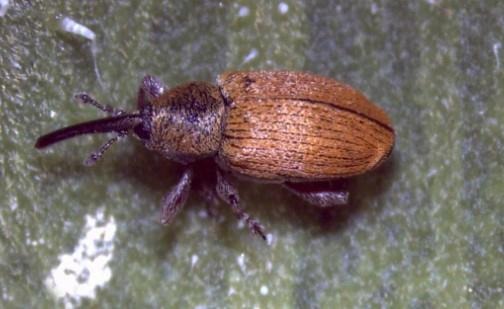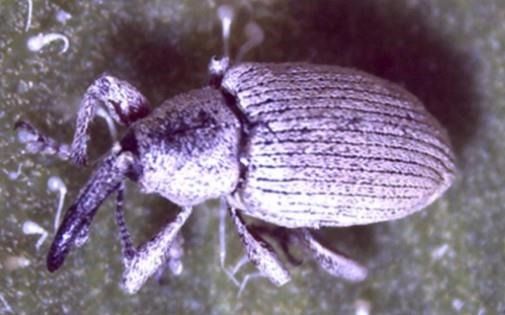Figure 1. Red and gray sunflower seed weevils on a sunflower bud. Courtesy: Ruth Beck.
Red Sunflower Seed Weevil

Figure 2. Red sunflower seed weevil adult. Courtesy: Adam Varenhorst.
Like its name implies, the red sunflower seed weevil has an orange/red appearance due to small hairs that are present on its body (Figure 2). Often, these weevils will appear almost black, because these hairs have been rubbed off. The red sunflower seed weevil has a black snout with small, bent antennae that originate from the snout. The adults will also have black legs. The red sunflower seed weevil is smaller than the gray sunflower weevil.
When examining a plant, the red sunflower seed weevil will often be found down between the developing seeds in the head. It can also be observed climbing on the head or on the leaves and stem of the plant. Prior to flowering, pulling back the bracts can often uncover seed weevils. The red sunflower seed weevils are capable of flight. They also play dead and drop from the plant when disturbed, which is referred to as thanatosis.
Gray Sunflower Seed Weevil

Figure 3. Gray sunflower seed weevil adult. Courtesy: Adam Varenhorst.
Aptly named, the gray sunflower seed weevil adult is covered in small, gray hairs that cover the majority of its body (Figure 3). The gray sunflower seed weevil is larger in size when compared to the red sunflower seed weevil and has gray legs instead of black. It also has a black snout that has small antennae that originate from it. The gray seed weevil emerges approximately 10 days before the red sunflower seed weevil.
The larvae of both species are small and feed on the developing seeds. They are cream-colored and take on a “C” shape when disturbed.
Source : sdstate.edu